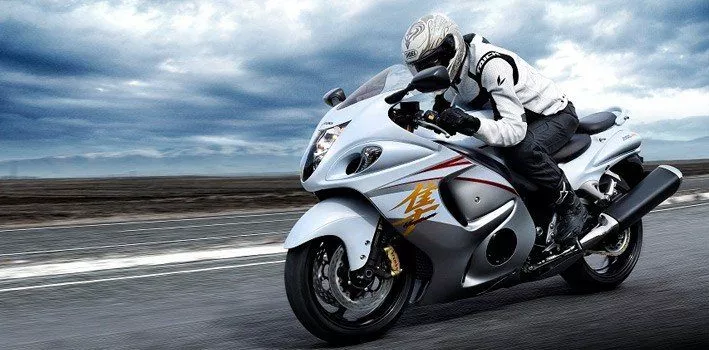From the moment the combustion engine was first used to power the vehicles of the Industrial Revolution, we’ve always pushed to go faster, more efficiently, and for less money.
Former racing driver Mario Andretti summarized the risk and love for speed we all have “If everything seems under control, you’re not going fast enough.”
Being an ex-mechanic and a self-confessed lover of anything that’s engine-powered, this list is going to be great fun.
Here we’re going to look at 5 of the fastest vehicles in the world, one from each major form of transportation.
What is the world’s fastest car?

There has been quite a bit of controversy about what car actually holds the title of “world’s fastest production car”.
According to the Guinness World Records, as of 2013, the record lies with the Bugatti Veyron 16.4 Super sport after reaching a top speed of 431.072km/h (267.856mph).
The issue is that in 2014, the Hennessey Venom GT hit 435.31 km/h (270.49 mph) which of course is faster than the Veyron and should surely give the Venom the title.
But the argument is in how the top speed was measured.
The Bugatti’s speed was measured after two runs were made, one in each direction and those were then averaged to give its figure but the Venom was measured by a single run in one direction making it less reliable.
To make matters worse, there is a 3rd competitor, the Koenigsegg One:1.
The only good news for the Bugatti is that the one:1 is actually focused on its acceleration rather than speed.
Good job really, the one:1 has a theoretical top speed of 273mph (just over 439 km/h).
What is the world’s fastest motorcycle?
The motorcycle is even harder to pinpoint than the car as most motorcycles have an unwritten agreement when it comes to top speed.
All the bikes are limited to 186mph (299 km/h) which, when straddling a two-wheeled thundering lump of metal, seems a very sensible idea.
The other problem is whether we talk about road legality or not.
As I mentioned earlier, this list focuses on production vehicles only but there will be a few other mentions of non-production or racing vehicles so why not start here!
The Dodge Tomahawk is regarded, quite justifiably, as the world’s fastest motorcycle but isn’t a production bike.
The dodge theoretically, due to this non-legal status, reaches an eye-watering top speed of around 400mph (around 645 km/h).
The real winner though of the world’s fastest motorcycle seems to be the Suzuki Hayabusa with some reporting that it can reach 248mph (399 km/h).
This top speed is unimaginable especially when you’re the one straddling the beast as it reaches that figure.
What is the world’s fastest train?

When it comes to trains there really is quite the difference between engine-powered and more conceptual trains, here we’ll look at both.
The highest speed recorded on any national rail system instead of a test track was on April 3, 2007. It was made by a French SNCF modified version of the TGV called V150.
This train reached 574.8 km/h (357.2 mph), to get to this speed it did need larger wheels and two engines driving three double-decker cars.
Now when we talk about the world’s fastest train, the winner has to be the Maglev.
This Japanese magnetically levitated train, managed to reach an eye-watering top speed of 603km/h (374.69mph) whilst being operated by Central Japan Railway on a test track in Yamanashi Prefecture, west of Tokyo.
The previous record was also set by itself just a few days prior to this manned test run. The Maglev uses electrically charged magnets to “float” above the track and is propelled by magnetic pulses.
Normal trains can’t reach these speeds as the Maglev doesn’t need wheels, axles, or bearings.
JR Central is said to be developing a Maglev track to link Tokyo and Nagoya in 40 minutes by 2027, a distance of over 300km.
What is the world’s fastest plane?

Although not a production vehicle, the greatest speed ever reached by a manned aircraft that isn’t a spacecraft was made by the North American Aviation X-15A-2.
In a full pink ablative and white sealant coating to protect the craft from extreme temperatures, it reached 7,270 km/h (4,520 mph) on October 3, 1967, over the Mojave Desert, USA.
The plane was let loose from an NB-52 plane at 10,600 m (35,000 ft) and completed this amazing feat.
The record was an unofficial human speed record and until the Space Shuttle came along the record was unbroken.
When it comes to commercial airliners, the Boeing 747 is the winner. It can cruise at 92% of the speed of sound, or Mach .92, whereas most airliners run at Mach .8.
Due to the drastic fuel consumption that happens when flying the Boeing at this speed, it’s rarely done.
What is the world’s fastest boat?

As with all forms of transportation, the difference between racing and normal everyday versions is of course rather large.
The official world water speed record was set on October 8, 1978, by Ken Warby after reaching 275.97 knots (511.11 km/h, or 317.58 mph) on Blowering Dam Lake, New South Wales, Australia in the jet-powered hydroplane Spirit of Australia.
Once again, what’s classed as the fastest of one field does depend on what categorization you are using. The XSR48 is the fastest diesel boat in production.
With a run of 100 boats and a price tag of $1.85 million (£1.3 million), this 800bhp race boat can reach over 161km/h (100mph), and its stiff Kevlar/carbon-fiber monocoque hull measures 157.5-m (48-ft).
The boats were launched in Lymington, the UK in December 2006.
Whatever form of transport, be it land or air, there is always so much to discuss and learn.
From the Bugatti to the Boeing, if you’re an adrenaline junkie, there really is endless ways to get your hit.
Every year newer and newer vehicles are released, pushing the boundaries of what we know, with the older versions filtering their way down to the masses.
My car has a top speed of over 225km/h (140 mph), which would have been unheard of even a few decades ago let alone the 320km/h (200mph) mark.
The risk of injury though is, of course, the flip side of the coin, and as these modes of transport become faster, lighter, and generally more impressive we all have to remember our responsibility to operate them safely and sensibly.












